Cleaning cloth diapers at home is probably the part about cloth that intimidates people the most and scares them off from trying it. I hope today I can help alleviate any concerns about this for those of you that are held back by the thought of washing and dealing with soiled diapers.
Cleaning cloth diapers at home is certainly doable. You do not need a diaper service! While washing diapers is not complicated, it might take a couple of posts to fully explain the process for people who are nervous about it.
This is part three in a Cloth Diapering 101 series. You can catch post one here and post two here.
What Do I Do with the Poop?
This is probably what most of you are wondering the most about, so I’ll just cut right to the chase. What you do with the poop depends on their age and diet.
From birth until you start solids (which most doctors recommend at 6 months of age), if your baby is breastfed you do not have to do anything with the poop. You take the diaper off, clean your baby, put on a fresh diaper, and put the diaper in the diaper pail.
Notice how this is exactly what you would do if you were using disposables, only instead of the diaper pail, you would throw the diaper away.
Many people say this only works with breastfed baby poop, but some people say it’s fine for formula poop, too. I myself have done it with formula poop and it has not been an issue. Some people say it will cause poop to build up in your pipes, so do so at your own risk.
Breastfed baby poop is water-soluble, meaning it should wash away without any issues. Formula poop is a little different, but I have had no issues washing it away. Liquid diet often means liquid poop.
If you are formula feeding, you can try washing without removing the poop and see how it goes.
Can You Really Always Wash the Poop Away?
Keep in mind that while you should be able to just wash the diapers normally, some washing machines have trouble removing baby poop (even breastfed poop) because they don’t agitate enough.
If that is an issue for you, then you may want to try some of the poop removal methods described below, even if your baby isn’t on solid food yet. Now that I have an HE machine, I will probably end up spraying breastfed poop off before washing when baby #3 comes. The agitation is weak in my new (to me) machine.
Also, no, it is not gross to put baby poop in your washer. It completely washes out and drains away if your washer gets decent agitation. I get some of you may still feel put off by that, but trust me. It’s fine. 🙂 However, if it really grosses you out, you don’t have to wash them that way. You can remove the poop first.
Once the baby starts eating solid food, you will always need to remove the poop before putting your diaper in the diaper pail. There are a couple of methods for this. I’ll start with the most simple/cheapest, and move my way through more expensive options.
Poop Removal Option 1– Dip & Swish
What I did with my boys’ diapers was what I like to call the “Dip and Swish”. Bring your diaper to the toilet, grab the diaper by pinching the front and back together, but inside out so the poop is exposed. Then swirl it in the toilet, flushing as needed to get new clean water. In the photo, you can see how I hold it. It’s just folding it inside-out and pinching the top.
Pros of this method:
Free, simple, can do it anywhere
Cons:
Until you get the technique down, it can be a bit messy.
Poop Removal Option 2– Using a Scraper
You can use a scraper to remove poop from a diaper!
Many people like to keep a rubber spatula (affectionately called a “poop stick”) in a cup in their bathroom, usually tucked behind the toilet or out of sight. This method is easy and simple to do. Just bring the diaper to the toilet, hold it open over the bowl, and scrape with the spatula until it’s all off.
Pros:
Cheap (just a couple bucks for a spatula), simple, effective
Cons:
Hard to do when you’re out and about (though you can choose to put the soiled diaper in a wet bag and deal with the poop once you get home, too). Some people also get grossed out by the concept of a poop stick. Here’s the thing, though: Babies poop, people! You will be dealing with baby poop in some capacity regardless of your method of diapering.
As long as you have a secure place to keep it where children won’t grab hold of it, and you disinfect it regularly, the rubber spatula/scraper is a great option.
Poop Removal Option 3– Diaper Sprayer
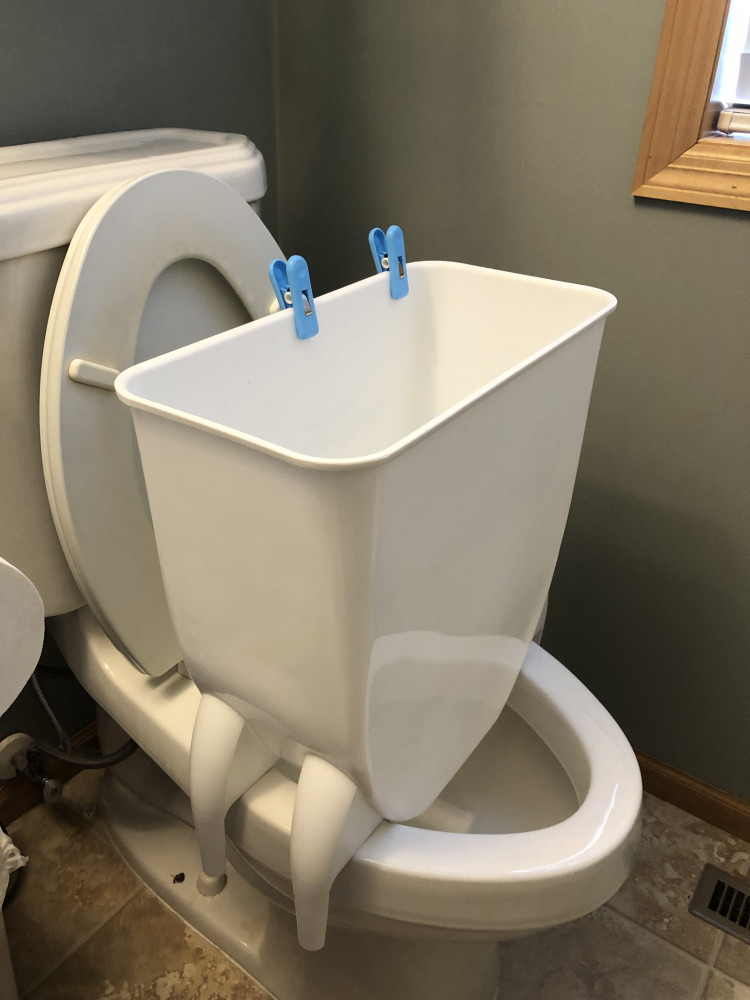 Lastly, you can use a diaper sprayer, such as the Aquaus Cloth Diaper Sprayer. You can also make one yourself with parts from the hardware store if you are handy. A diaper sprayer is a nice option to consider. With a sprayer, you can use a jet stream of water to get the poop off the diaper and into the toilet.
Lastly, you can use a diaper sprayer, such as the Aquaus Cloth Diaper Sprayer. You can also make one yourself with parts from the hardware store if you are handy. A diaper sprayer is a nice option to consider. With a sprayer, you can use a jet stream of water to get the poop off the diaper and into the toilet.
If you choose the sprayer route, I highly recommend making or purchasing a shield. Clipping the diaper into the shield will help prevent any splashing or run-off from getting all over you and your bathroom.
Pros:
Many people feel like it’s a simpler and cleaner method of removal. Some cloth diapering families have even said they could have never stuck with cloth diapering if it weren’t for the sprayer.
Cons:
This is the most expensive option for poop removal. Also, while some people feel it is cleaner, other people find that it is even messier with the splashing (which is why I highly recommend getting a shield if you go this route).
Poop Removal Option 4– Diaper Liners
Diaper liners are thin pieces of material that you lay between your baby and the inner part of the diaper. The idea is that if your baby poops, the poop should be contained to that liner. Then you can throw away the liner instead of dealing directly with the poop.
Diaper liners can be disposable, or sometimes people cut up pieces of fleece and use those.
Pros:
This is probably the easiest method of poop removal.
Cons:
I will be honest; disposable diaper liners are not my favorite method of poop removal for a couple of reasons.
First of all, human waste should not be thrown in the trash. Even if you use disposable diapers, the proper way to dispose of them is to dump what you can of the waste in the toilet before throwing them away.
Yes, I realize this is not a commonly followed rule. Yes, I realize nobody does it. Just because nobody does this doesn’t mean you shouldn’t. 🙂 Sewage treatment plants or private septic systems are the best places for human waste to be safely dealt with.
Second of all, even if a liner claims to be flushable, it can cause blockages and all sorts of other problems. They do not break down the way toilet paper does.
I think the added cost of the liners and their disposable nature is counter-intuitive to most cloth diapering motives. However, many people use liners and you need to do what works best for you.
You can make reusable diaper liners out of fleece, and some people find the fleece easier to clean off than the diaper itself. That is a great option to try if you want to use liners, but would rather not use disposable products.
What about Toddler Poop?
I’m not quite done with the poop removal information, though. I want to share some good news. There is some hope that once your toddler is off of bottles and their poop starts to get more solid, you can use the plopping method!
It’s exactly what it sounds. Most toddlers will reach a point where their poop is easily ploppable. However, this depends a lot on what kinds of foods they eat, too. Some toddlers never have ploppable poop, unfortunately. Especially if they love fruit as much as my kids. 😉
You bring the diaper to the toilet, lower it to just above the waterline, and dump or plop the poop off the diaper into the water. No scraping, no swishing…if any is stuck, just grab a wad of toilet paper, wipe it off, and throw it in the toilet. That’s it!
You will still probably have poops that require you to use one of the methods described above on occasion, but hopefully, you can have ploppable poop most of the time!
What About Stains?
Stains can and will happen with your cloth diapers. I find that the amount of staining I have to deal with correlates with the type of detergent I use and how often I wash.
Some people ignore diaper stains–after all, they can’t be seen when the diaper is being worn. Other people can’t stand them and want to keep their diapers looking their best.
There are many removal methods you can use–this guide called How To Remove Those Pesky Poop Stains from Mom Loves Best will give you several suggestions to beat stains once and for all.
The easiest and most natural stain removal method is called Sunning–this is when you take a clean diaper from the wash (but still wet!) and let it dry stain-side up outside in the sun. It should fade the stain, but it may take a few times to be rid of the stain completely.
Quick Recap
In summary, poop removal is generally pretty easy from birth to six months…because you don’t need to remove it! It might become easy again once your baby becomes a toddler on a diet of mostly solid food.
The only time you really need to worry about messy poop removal is from about 6 months of age until somewhere between 12 and 16 months. That’s really not a huge window of time.
Some toddlers may not have solid poops for longer than that, but on average, this is what you can expect. Also, I want to reiterate that just because it might be messier from 6 months to the toddler stage, that doesn’t mean it’s hard to deal with. It’s still simple to do.
I hope this helps put your mind at ease regarding this subject. In the next post, we will dig deeper into other washing basics.
What do you think of these methods? Leave a comment below! I’d love to help troubleshoot or learn about any new ideas I didn’t cover here!
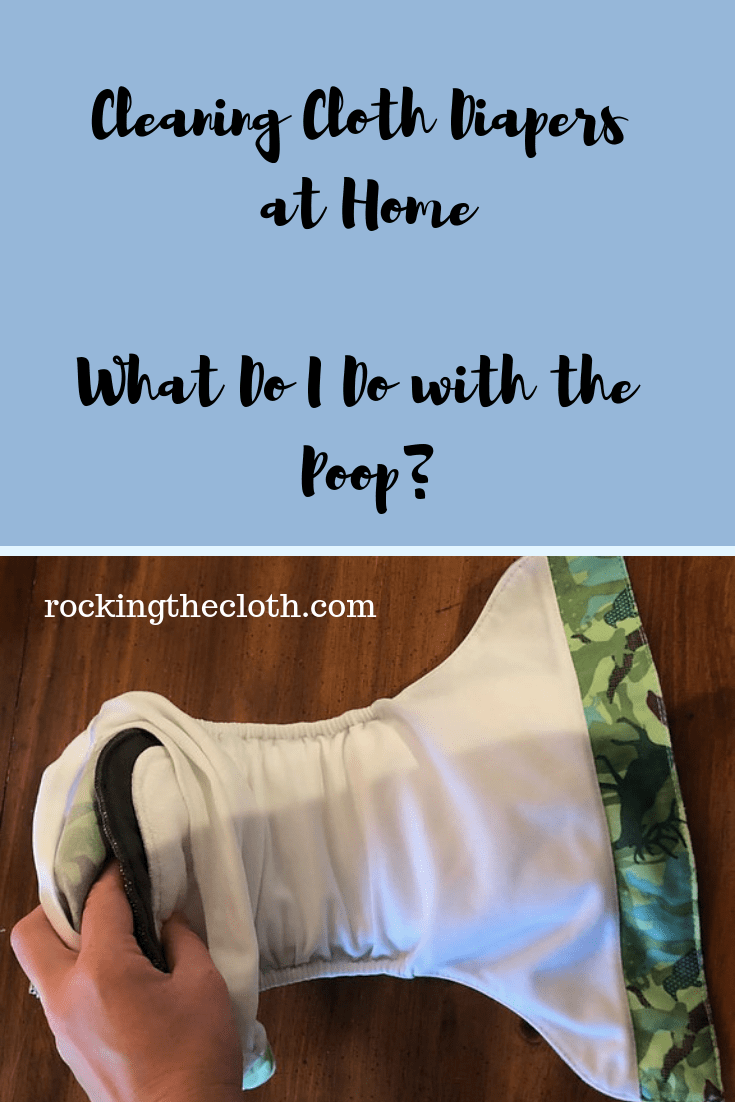


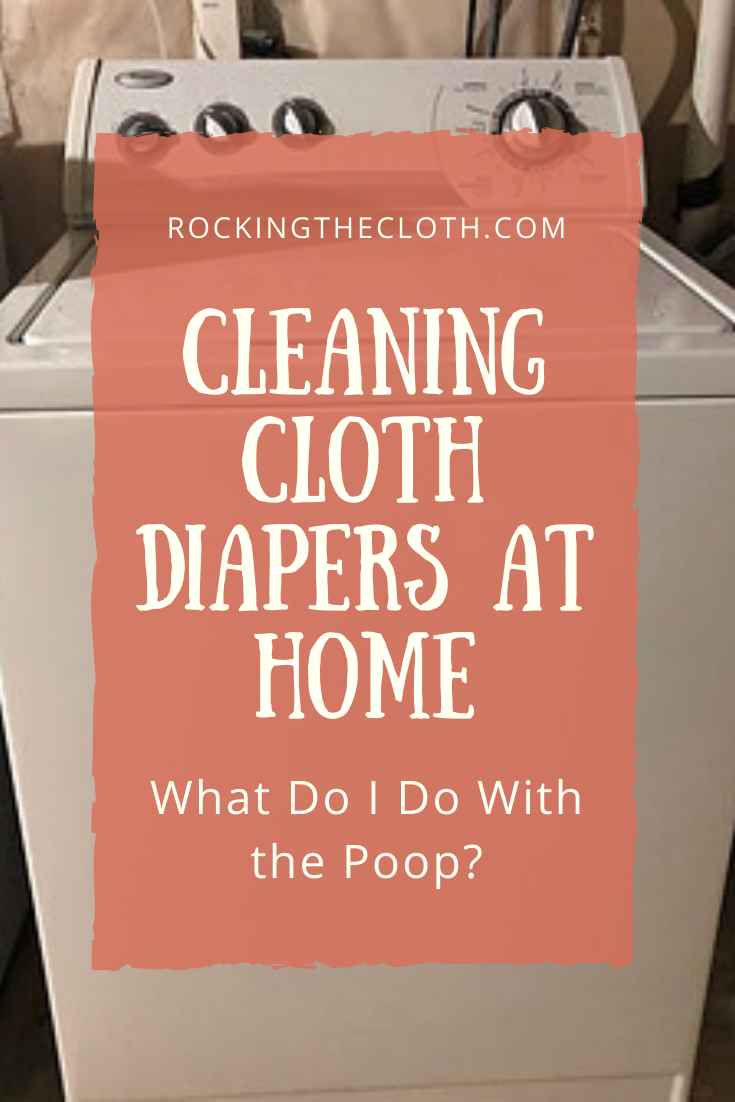
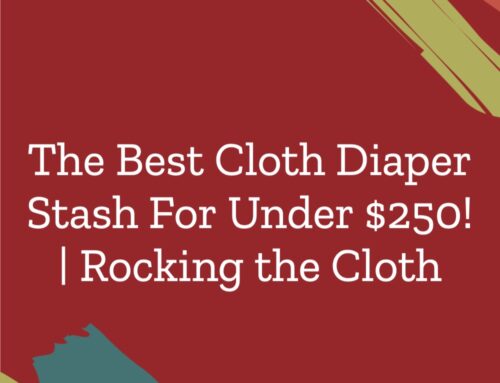
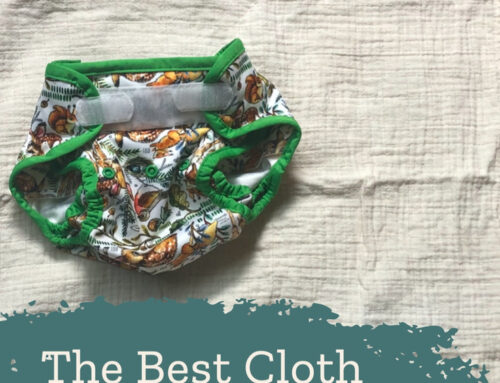
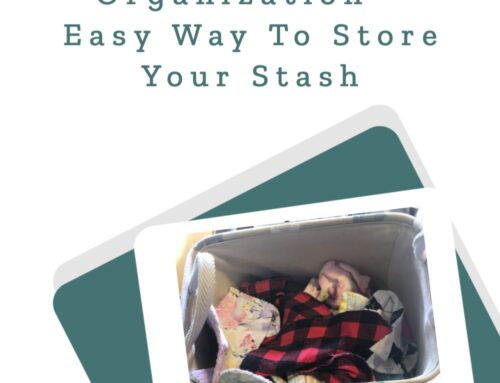
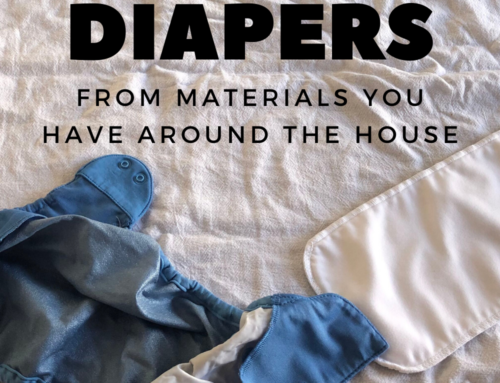
I don’t yet have any children, and I have never considered cloth diapers before. However your article has led me to be slightly more open to the idea. I guess we’ll see where I’m at when the time comes. 🙂
Definitely! When the time comes, let me know if you have any questions about it!
First I want to say your title for this site is ingenious. I Love It!!! I am a grandma and never thought of what to do with the poop. Back 40 years ago we just got rid of it. So when I read your post I was amazed that you came up with so many options. And a diaper sprayer. That is awesome. I could have used one of those. What a great idea.
I am loving it. I will have to read more of your posts.
Thank you! I love your point about how 40 years ago, you just got rid of it and didn’t think much about it. Isn’t it true that we now overthink everything and need particular products and strategies for everything? Hah!
The scraper is the best idea yet. Holy cow that’s brilliant. Seriously, especially on some of the bigger days, this would do the trick without having to worry. I’m going to get a little holder for it right beside the changing table. Again, Brilliant!
Cheers, JB
Thanks! Hope it helps out!
It’s so good to know that cloth diapers are still being used regularly!
Cheers to saving the earth!
I appreciate this post and the best ways to remove poop from cloth diapers. Being a person who hasn’t had children yet, it is great that you were able to open my eyes to a very real option – instead of disposable diapers.
Thanks again,
Kahlua
Thanks! Glad it is giving you something to think about for the future!
We love our cloth diapers, and we are one of those families that stands by the diaper sprayer! It does make a mess, but personally all that does is to motivate me to clean the bathroom regularly, hahahahaha!
Thanks for sharing about cloth diapers! More people should know how great they are and that poop shouldn’t be a deal-breaker.
What they don’t know is that they aren’t supposed to throwing away poop in a disposable anyway!
Thanks Rachel! That is true, you’re *technically* supposed to dispose of the poop before throwing a disposable away to prevent ground water contamination. Most people don’t know that!
Glad you’re sprayer has worked well for you!